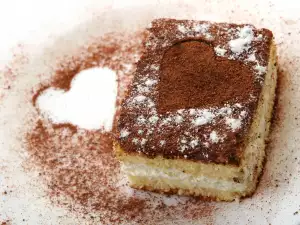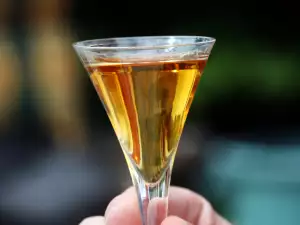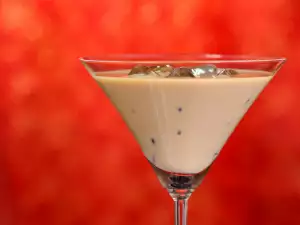Amaretto is an Italian sweet liqueur, which is made from apricots or almonds, in some instances both. Sometimes they add cherries and peaches to it as well. Its name comes from the Italian word amaro, which means bitter.
However, the sweeteners in the drink make the bitterness tolerable. Taste-wise, the liqueur is slightly bitter and should not be mistaken for another popular Italian drink - Amaro, which is made from herbs and the bitter taste in it is much stronger.
History of Amaretto
In 1525, the church in the Italian commune of Saronno hired one of the students of Leonardo da Vinci, Bernardino Luini, to paint one of its walls. The Christian church bore the name of the Virgin Mary and Bernardino Luini was tasked with depicting the mother of God.
He was in search of an appropriate model and inspiration until he met a young girl - an innkeeper who became his muse and according to most versions - his lover.
After he had painted her, as a way of saying thanks, the young woman wanted to give him a gift. Since she didn't have much in the way of financial wealth, to reward the artist she created a sweet almond flavored liqueur, using the almonds that grew in her garden.
Production of Amaretto
The main aspect when preparing this almond liqueur is the control over the sugar in it. At the end of the production process, each amaretto needs to have an almond aroma and slightly bitter taste.

To make it at home you'll need the pits of 4.5 lb of apricots - raw, not roasted or dried, 2 cups vodka, 1 cup of sugar dissolved in a little water, 1 tablespoon coconut flakes, the rind of 1/4 lemon, a stick of vanilla and 2 tablespoons glycerin.
Pour all of the ingredients excluding the glycerin in a glass bottle. Shake it well and leave it in the sun for 1 month. The sunnier the area where you place the bottle, the more aromatic the liqueur will be. Its color will be amber.
Once the month has elapsed, filter the liquid with a fine strainer and finally add the glycerin to soften the taste of the liqueur.
Composition of Amaretto
50 g of amaretto contain 110 calories, 17 g carbohydrates and 3 g sugar. The liqueur contains no fat, protein, fiber, cholesterol or sodium.
Due to the low content of vitamins and minerals in the alcohol but also because of the lack of substances that cause obesity, its composition is classified as so-called empty calories - a high number of calories that provide few nutrients.
When added to food, 1 tablespoon of amaretto adds 35 cal and 5 g of carbohydrates. Greater quantities, such as half a cup, provide 240 cal and 24 g of carbohydrates.
Cooking with Amaretto
The liqueur can be widely used in cooking, including in ice cream cakes with almonds and chocolate, cheesecakes and layer cakes. It is used to make tiramisu, giving the dessert its typical aroma.
Any desserts made with the liqueur let the taster feel the almond tinge and juiciness, excellently complementing with vanilla, cream, ice cream and fruits.
Amaretto can also be used in spicier recipes with chicken, as well as ingredients for pancakes. The liqueur can be successfully added to fish sauces, vegetable salads and to whipped cream.

Amaretto can be mixed with drinks such as coffee, tea, cola, orange juice or a sparkling wine such as champagne, further enhancing the taste.
Serving Amaretto
The liqueur can be served by itself or with ice. Its alcoholic content is between 24 and 28% ABV. Since the word amaretto is often associated with the Italian word amore, which means love, the drink is often ordered by couples who are on a romantic date.
It is suitable for serving before or after dinner with an aperitif or dessert, respectively, because of its pungent aroma. Amaretto celebrates its official holiday each year on April 19, when its admirers are given yet another reason to treat themselves with the drink.
Choosing and Storing Amaretto
The liqueur with the almond aroma needs to be stored at room temperature in a tightly closed bottle. If kept in a refrigerator it will lose its characteristic color and become murkier. Once opened, the bottle needs to be stored with the cap tightly closed so that the drink's aroma doesn't change.
There are tens of varieties of the liqueur on the market but most emblematic are the brands Amaretto di Saschira, Amaretto Marcati and Amaretto di Saronno, which have a centuries' old history of production.
The bottles in which it is sold are rectangular and have a label certifying their quality.



















Comments